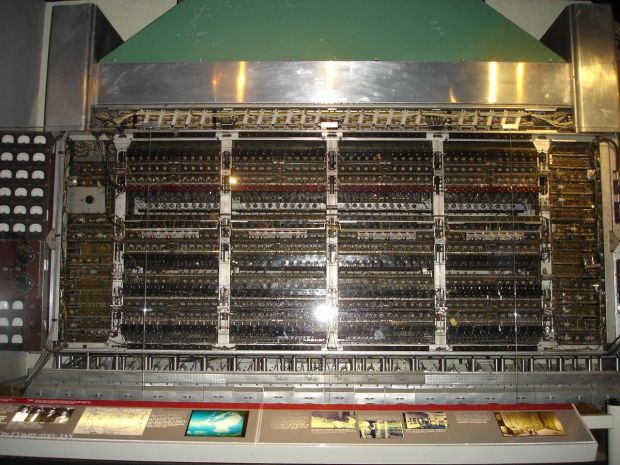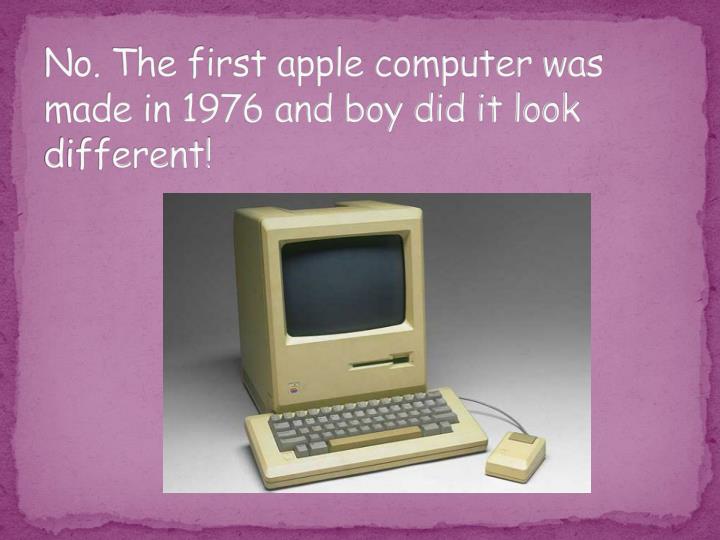When Was The First Home Computer Invented
Table of Content
The Z1 was created by German Konrad Zuse in his parents' living room between 1936 and 1938. It is considered to be the first electromechanical binary programmable computer and the first functional modern computer. In the late 1950s and early 1960s, a number of computers were developed that were much faster than the IBM 702.

Many systems also had a dot matrix printer for producing paper output. Although the Apple II and Atari computers are functionally similar, Atari's home-oriented marketing resulted in a game-heavy library with much less business software. By the late 1980s, many mass merchants sold video game consoles like the Nintendo Entertainment System, but no longer sold home computers. After the success of the Radio Shack TRS-80, the Commodore PET and the Apple II in 1977, almost every manufacturer of consumer electronics rushed to introduce a home computer. Large numbers of new machines of all types began to appear during the late 1970s and early 1980s.
BBC News Services
As multitasking was never common on home computers, this practice went largely unnoticed by users. Most software even lacked an exit command, requiring a reboot to use the system for something else. Almost universally, home computers had a BASIC interpreter combined with a line editor in permanent read-only memory which one could use to type in BASIC programs and execute them immediately or save them to tape or disk. In direct mode, the BASIC interpreter was also used as the user interface, and given tasks such as loading, saving, managing, and running files.
The VIC-20 also came with optional tape input, floppy disk drive, and cartridge port, and featured a resolution of 176×184 with 3 bits per pixel. Until the introduction of the IBM PC in 1981, computers such as the Apple II and TRS 80 also found considerable use in office work. In 1983 IBM introduced the PCjr in an attempt to continue their business computer success in the home computer market, but incompatibilities between it and the standard PC kept users away. American John Blankenbaker created what many experts consider to be the first personal computer---the Kenbak-1. By this point, these analogue machines could already replace human computers in some tasks and were calculating faster and faster, especially when their gears began to be replaced by electronic components. They were designed to perform one type of calculation and if they were to be used for another, their gears or circuits had to be replaced.
Access Date
Before the Analytical Engine, Babbage invented a machine called the Difference Engine, for compiling and printing mathematical tables. The first computer to be built was Colossus - an electronic, digital machine, made by British code breakers, between 1934 and 1945. But Babbage’s computer, called the Analytical Machine, was unlike and far more complex than any of these earlier creations - he designed it to perform any mathematical calculation. Babbage may have been inspired in his creation by older machines such as the abacus, invented in China in the year 1200. The Programma P101 may be considered as the first programmable electronic desk top calculator in the world. As of June 2008, the number of personal computers worldwide in use hit one billion.
Alan Turing set out the idea for the first modern computer, the Electromechanical Turing machine, in a paper in 1936. There were neither microprocessor nor integrated circuits in the P101, but only transistors, resistors and condensers. Through-silicon via is used in High Bandwidth Memory , a successor of DDR-SDRAM. In 2011, Intel announced the commercialisation of Tri-gate transistor. FinFET was developed in the 1990s by Chenming Hu and his colleagues at UC Berkeley.
The first computer with RAM
During Steve Jobs' hiatus from Apple, a number of different models of Macintosh, including the Macintosh Plus and Macintosh II, were released to a great degree of success. The entire Macintosh line of computers was IBM's major competition up until the early 1990s. Because MS-DOS was available as a separate product, some companies attempted to make computers available which could run MS-DOS and programs. (See List of early non-IBM-PC-compatible PCs.) The first truly IBM PC compatible machines came from Compaq, although others soon followed. The IBM PC typically came with PC DOS, an operating system based on Gary Kildall's CP/M-80 operating system. IBM turned to Bill Gates, who was already providing the ROM BASIC interpreter for the PC.

Unlike a modern personal computer, the Kenbak-1 was built of small-scale integrated circuits, and did not use a microprocessor. In 1973, production of the Kenbak-1 stopped as Kenbak Corporation folded. In addition, minicomputers were relatively interactive and soon had their own operating systems. The minicomputer Xerox Alto was a landmark step in the development of personal computers because of its graphical user interface, bit-mapped high resolution screen, large internal and external memory storage, mouse, and special software. First introduced at the West Coast Computer Faire in April 1977, the product caught the attention of tech experts and enthusiasts alike.
Gates is responsible for a number of important inventions, including the Microsoft Windows operating system, the Microsoft Office suite of software, and the Xbox video game console. He has also made significant contributions to the development of the Internet. The first computer in the world was called the Analytical Engine and was designed by Charles Babbage in 1822. In 1937, Konrad Zuse designed and built the first operational computer, the Z1.
In addition, if any bankruptcy or reorganization proceeding is brought by or against us, such information may be considered an asset of ours and may be sold or transferred to third parties. Should a sale or transfer occur, we will use reasonable efforts to try to require that the transferee use personal information provided through our iD Sites & Services in a manner that is consistent with this privacy statement. We do not sell or otherwise share your or your student’s information with any third parties, except for the limited purposes described below.
Please read this form carefully and be aware that in seeking permission from Northwestern University for your child to participate in a Northwestern University event, you will be waiving all claims for injuries you might sustain arising out of your participation. Participation in this event is voluntary and at your own discretion and judgment. Room checks will be conducted by program staff to determine room damages. Any damages caused in the rooms or common areas will be charged to the program.
The concept of a digital programmable computer was originated by Charles Babbage an English mechanical engineer and mathematician. The first modern electronic digital computer was called the Atanasoff–Berry computer, or ABC. In May 2022, Chinese officials ordered government agencies and state-backed companies to remove personal computers produced by American corporations and replace them with equipment from domestic companies. The state-mandated order is expected to result in the removal of about 50 million computers, with HP and Dell expected to lose the most future business from the mandate. VESA Local Bus and Extended ISA were also displaced by PCI, but a majority of later (post-1992) 486-based systems were featuring a VESA Local Bus video card.
It wasn't until 1991 that his particular ideas were finally translated into a functioning computer. That's when the Science Museum in London built, to Babbage's exact specifications, his Difference Engine. It stands 11 feet long and 7 feet tall , contains 8,000 moving parts and weighs 15 tons (13.6 metric tons). A copy of the machine was built and shipped to the Computer History Museum in Mountain View, Calif., where it remained on display until December 2010. Neither device would function on a desktop, but they are no doubt the first computers and precursors to the modern PC. In 1994, Acorn Computers launched its Risc PC series of high-end desktop computers.
The Jacquard loom had shown the benefits of directing a multipurpose device through coded instructions, and it had demonstrated how punched cards could be used to modify those instructions quickly and flexibly. It was a mathematical genius in England who began to put all these pieces together. In 1991, the London Science Museum finally built a complete and working model of the machine using techniques that were available in Babbage's time.
Comments
Post a Comment